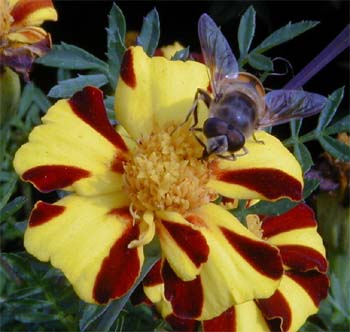
Hover flies (or flower flies or syrphid flies, in the family Syrphidae) are common and important natural enemies of aphids and other small, slow-moving insects. The adults resemble bees or wasps, and are often seen visiting flowers, hovering over the flowers and darting around. There are many different species that range in size from less than 1/4 inch long to more than 3/4 inch long. Many have the typical black and yellow stripes on the abdomen that give them a bee-like appearance, but others are hairy with a long, thin abdomen. All have short antennae.
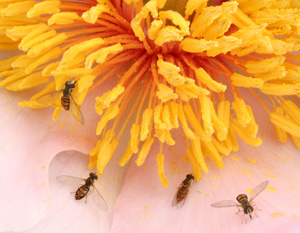
The adults need flowers as nectar and pollen sources. They are attracted to weedy borders or mixed garden plantings that are also infested with aphids. Some flowers that are especially attractive to hover flies include wild carrot or Queen Anne’s lace, wild mustard, sweet alyssum, coriander, dill, and other small-flowered herbs.
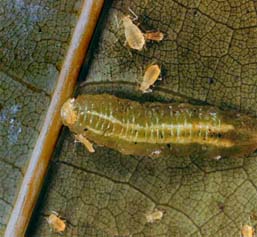
Females lay tiny white eggs singly on leaves or shoots near or among aphid colonies. Each female may deposit several hundred eggs through midsummer. The larvae that hatch in two to three days are small legless maggots that range in color from creamy-white to green or brown. They look somewhat slug-like and are tapered towards the head. The larvae feed on aphids or other insects and move around on the plants in search of prey. The larvae complete their development in two to three weeks while consuming up to 400 aphids each.
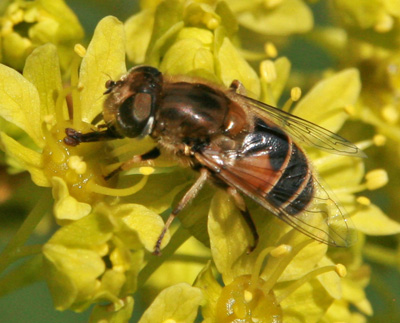
Some species pupate on the foliage near the feeding site, while others leave the plant and enter the soil to pupate. The pupa is enclosed within a puparium, which is the hardened skin of the last larval instar. The smooth, tan puparia are often teardrop shaped. Hover flies overwinter as pupae. During the growing season, adults emerge in one to two weeks. Generation time depends on temperature, species, and availability of food; there may be five to seven generations per year.
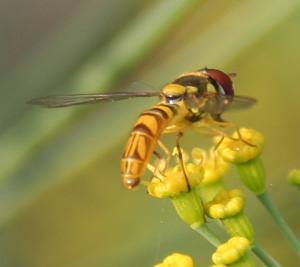
Hover flies can be effective in suppressing aphid populations in gardens and mixed plots. They will be most noticeable in the later half of the growing season, usually after aphid infestations are established. Because they are not as conspicuous as lady beetle adults or larvae they may not be given credit for the effect they have on aphid colonies. Their impact on aphids in large commercial plantings, however, has not been studied.
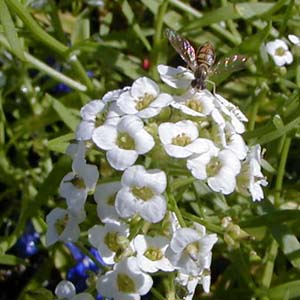
Although hover fly larvae feed mainly on aphids, they will eat small caterpillars, thrips and other small insects. They have even been noted as predators of small European corn borer and corn earworm larvae.
– Susan Mahr, University of Wisconsin – Madison
February, 2025





 ▶︎ Watch: Hydrangeas: Know Them and Grow Them
▶︎ Watch: Hydrangeas: Know Them and Grow Them ▶︎ Watch: Fall Bulb Planting
▶︎ Watch: Fall Bulb Planting Aster, Symphyotrichum spp.
Aster, Symphyotrichum spp. Fascinating Fasciation
Fascinating Fasciation


